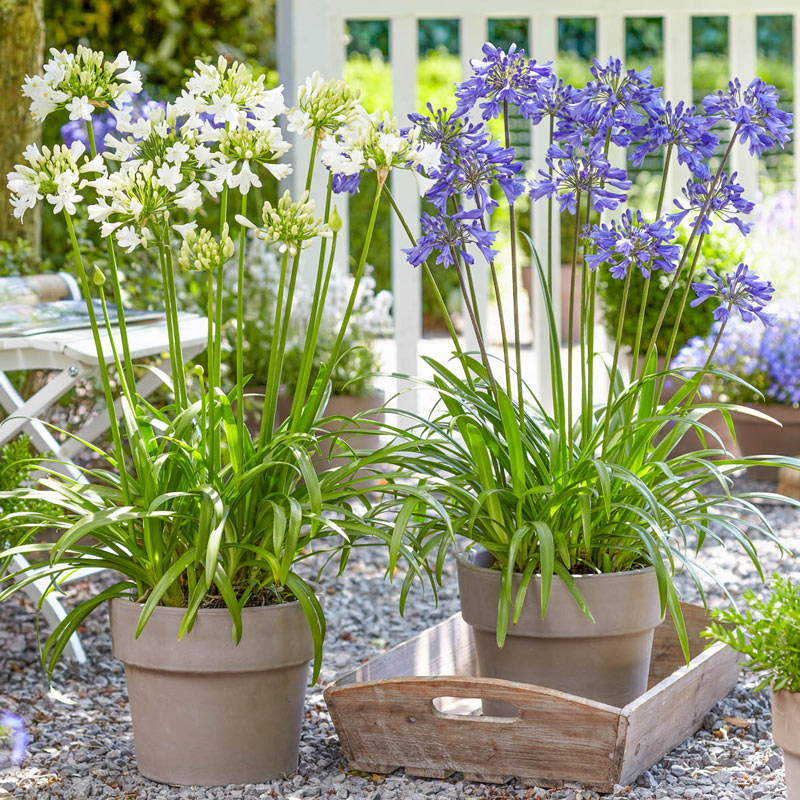Agapanthus Breeding: Tips for Expanding Your Plant Collection
Agapanthus Breeding: Tips for Expanding Your Plant Collection
Blog Article
Grasping the Art of Agapanthus Treatment: Necessary Actions for Healthy And Balanced Growth and Lively Blooms
In the world of horticulture, the farming of agapanthus stands as a satisfying undertaking for those who look for to nurture these elegant flowering plants. With their striking blooms and elegant foliage, agapanthus has captured the attention of gardeners worldwide. Nevertheless, accomplishing optimum growth and lively blossoms needs a nuanced approach that includes different essential actions. From selecting the right variety to grasping trimming strategies, the journey in the direction of cultivating thriving agapanthus plants is diverse and holds the vital to opening the full possibility of these botanical gems.

Choosing the Right Agapanthus Selection

When selecting the best Agapanthus selection for your garden, consider aspects such as environment suitability, bloom color, and development behavior. In addition, take into consideration the environment in your region to make certain the Agapanthus variety you pick can grow in your certain conditions. Comprehending the growth habit of various Agapanthus ranges is important for appropriate placement within your yard.
Suitable Growing Conditions
Thinking about the optimal ecological demands is vital for successful Agapanthus cultivation. Agapanthus grows in well-draining dirt with a slightly acidic to neutral pH level. When growing, choose a place that receives full sunlight to partial color. In hotter climates, giving some mid-day shade can protect against scorching of the fallen leaves. Agapanthus plants are sensitive to cool temperatures and ought to be protected from frost during winter season.
To make sure healthy development and vibrant flowers, plant Agapanthus bulbs at a depth of regarding 2-4 inches and space them 8-12 inches apart. Mulching around the base of the plants helps keep wetness and subdues weed development.
Watering and Feeding Tips
Maintaining appropriate dampness degrees and providing necessary nutrients are key aspects in the treatment program for Agapanthus plants. When it comes to sprinkling Agapanthus, it is essential to strike a balance. These plants favor constantly damp dirt however are vulnerable to root rot if overwatered. During the growing season, water deeply as soon as a week, making sure the soil is well-draining to avoid waterlogging. In hotter environments or during durations of dry spell, even more regular watering might be essential to keep the dirt uniformly moist. Nevertheless, decrease watering in the winter season to stop waterlogged problems.
Feeding Agapanthus is important for promoting healthy growth and respected blossoms. Use a well balanced plant food, such as a 10-10-10 formula, in the very early spring as new development emerges. By following these watering and fertilizing ideas, you can guarantee your Agapanthus plants grow and create lively, durable blossoms.
Trimming Strategies for Agapanthus
Pruning Agapanthus plants at the appropriate times and with proper strategies is important for keeping their wellness and advertising ideal development and flowering. The ideal time to trim Agapanthus is in late winter season or very early springtime before new development emerges. Begin by removing any dead or yellowing leaves near the base of the plant. Cut them as close to the ground as possible without damaging the emerging shoots.
Deadheading invested flowers can additionally reroute the plant's power right into creating even more blossoms rather than setting seeds. If you desire to collect seeds for proliferation, leave some flowers to fully grown and dry on the plant.
Bear in mind to make use of clean, sharp tools to make specific cuts and decrease the threat of introducing conditions. Agapanthus. Regular pruning will certainly help keep your Agapanthus looking healthy and neat while making certain an abundant display screen of attractive blossoms
Taking Care Of Common Parasites and Illness
After making certain proper trimming techniques for Agapanthus, it is crucial to deal with typical parasites and conditions that can impact the wellness and vitality of these plants. One typical bug that influences Agapanthus is the Agapanthus gall midget.
One more typical problem is fungal leaf area, which provides as dark sores on the leaves. To stop fungal diseases, ensure excellent air flow around the plants, prevent overhead watering, and remove any type of contaminated fallen leaves quickly. In addition, Agapanthus plants can struggle with root rot if they are planted in badly see draining dirt. To avoid this, plant Agapanthus in well-draining soil and prevent overwatering. By being alert and taking prompt activity against illness and pests, you can assist your Agapanthus plants prosper and create dynamic blooms.

Conclusion
In conclusion, understanding the art of agapanthus care entails selecting the best variety, supplying optimal growing problems, correct watering and feeding, appropriate pruning methods, and addressing usual bugs and conditions. By following these necessary actions, you can ensure healthy and balanced development and find out here dynamic flowers for your agapanthus plants. Remember to on a regular basis keep track of and preserve your plants to promote their total wellness and longevity.
To guarantee healthy growth and dynamic flowers, plant Agapanthus light bulbs at a deepness of regarding 2-4 inches and area them 8-12 inches apart. By complying with these watering and feeding pointers, you can ensure your Agapanthus plants flourish and produce vivid, durable blooms.
One common insect that influences Agapanthus is the Agapanthus gall midge. In addition, Agapanthus plants can experience from origin rot if they are planted in improperly draining pipes soil. By adhering to these important steps, you can guarantee healthy development and lively flowers for this hyperlink your agapanthus plants.
Report this page